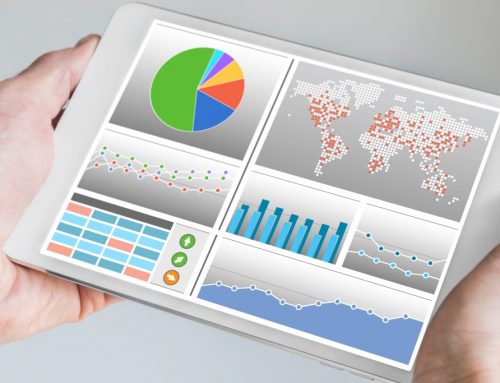Looking for a recap of the Office 365 news announced at the Microsoft Ignite Keynote? This is your place. I’ll give you brief overview of the latest news from the keynote and my options about what it means for you. Scott and I also discuss these announcements on the latest episode of our podcast.
So, let’s dive into the big news
Microsoft 365 Expansion
There is some expansion and updates coming to Microsoft 365. Microsoft 365 was first announced back in July at the Microsoft Inspire conference.. There are updates coming in a couple of different areas.
Microsoft 365 for Education
Microsoft 365 is not available for education! This is a plan from Microsoft that combines licensing for Windows 10, Enterprise Mobility + Security and Office 365 into a single plan. This was initially rolled out to to SMBs and Enterprises. It’s not available for Education as well! So, if you’re in the education space and looking to bundle all these services. You need to check this out!
Microsoft 365 F1
Just like with Microsoft 365 for education, Microsoft also announced Microsoft 365 F1. If you’re familiar with the Office 365 Kiosk plans recently renamed to the Office 365 F1 (or Frontline Worker) plans. This brings Microsoft 365 to those F1 plans. Along with just bringing Microsoft 365 to the F1 plan, there are also a few updates to plan as it relates to F1.
– There will be some new Windows 10 S devices coming from some of Microsoft’s hardware partners. These should be available later in 2017. These devices will start as low as $275
– Updates to Windows 10 to help in deploying these new devices. These updates will enable self-service deployment and simplified management. It will also help with management of remote devices (the target market for the Frontline work plan) as well as being able to lock down these devices to a single use.
– There will also be updates to the StaffHub in Office 365 to assist the frontline workers manage their workday.
Updates to Office 365
We all new there would be some Office 365 Updates. A lot of these you could see coming and were just waiting for Microsoft to make them official. Including one that was inadvertently leaked about two weeks ago. This set of announcements I can’t wait to get some demos on and actually get more on how everything is going to work. I’ll try to summarize my understanding, as well as some of my lingering questions about it.
New Search Features
Microsoft is making updates of search as well as starting to integrate LinkedIn more into Office 365. These features will help intelligently surface content from your organization as you are searching for people and information within your company.
- Bing for Business: This will be interesting. Essentially, if you use Bing for search as well as Office 365, it will integrate the Graph signals with your Bing search to surface content. It will use the intelligence from these two services in an attempt to show you content from both inside and outside your organization that is most relevant to your search.
- LinkedIn Data will nwo be integrated into Office 365 Profile cards. This is just what it sounds like. When looking at details about a colleague or contact in Office 365, it will start to not only pull in the information you have on record about them, but also details from LinkedIn and show all this information in their contact card. It’s nice to see Microsoft starting to take advantage of their LinkedIn acquisition and pulling this content into Office 365.
New Skype infrastructure
This is the infrastructure that is already powering Microsoft Teams. Microsoft appears to be rolling this infrastructure into the next version of Skype for Business Server that will be released in the second half of calendar year 2018. This will also help those customers who currently have there PBX and advanced calling capabilities on-premises and are not planning on moving those capabilities to the cloud. This an update version of the Skype for Business Cloud Connector, only enabled to work with Microsoft Teams…which brings us to…
Skype for Business Microsoft Teams
Yes, the rumors are true. Microsoft Teams will replace Skype for Business in Office 365 as the communication client. Microsoft clearly stated this will replace (not live along side) the Skype for Business Client. So, this is where I’m still confused. I’ll try to outline my questions/confusions here:
1. Will Skype for Business On-Premies still be available? If so, will there be an on-premises only client? That contradicts the statement that the Teams client will replace the Skype for Business Client.
2. Currently you can purchase Skype for Business as a stand alone plan. You can also license users just for Skype for Business. But currently, teams relies on other services in Office 365…like Exchange Online and SharePoint Online. How does this work if Teams is THE client?
3. Teams is Online only. Is there some lite version of the Teams client for users that still host Skype for Business on-premises? What does this mean for on-premises customers?
This whole story is still a little confusing tome.
Calling Features are coming to Microsoft Teams
Given the last point, this was a given. If Teams is going to replace Skype for Business as the client, they NEED to bring the calling capabilities into Microsoft Teams. These are all the PSTN features, the Cloud PBX features, joining a teams meeting and conference call from a phone, etc. The full voice calling functionality set wil be brought into the Microsoft Teams client.
SharePoint and OneDrive
The keynote announcements here are fairly insignificant. There should be additional announcements coming throughout the week, but for now.
New sharing experience
This will make it easier to share files with users outside your company, even if they don’t have a Microsoft account. It also gives you greater control over the sharing within SharePoint and OneDrive. This functionally, as with most, is already available online and will be coming to the Office Apps soon. Sharing is definitely one of my larger frustrations when it comes to both SharePoint and OneDrive, especially with external users. One can only hope this update helps and I can get to the point where I can actually stop emailing files…you know, like we’ve been trying to do ever since SharePoint’s inception.
SharePoint and Teams
Notice a common theme here? Teams? You’ll now be able to access more of SharePoint within Teams. This will include SharePoint pages and Team News. Between this and the announcement around Skype for Business, you have less and less reason to go into anything else, you can just hang out in Teams. As I write this, it’s almost like Teams is the next version of Internet Explorer …er…rather Edge. It’s the browser to navigate to all of your Office 365 services and functionality. Who needs a browser or any other client if you have Microsoft Teams?
Yammer
It’s not going away. In fact, it’s continuing to move forward. There will be even deeper integration into SharePoint as well new insights. Other than that, not a lot to talk about. There are some additional Yammer sessions later this week, so maybe we’ll get some more news as the week goes on.
Office 365 Management and Security
Microsoft is also bringing new management and security functionality to Office 365 and Microsoft 365.
Management Capabilities
- New Intune capabilities are coming with more support for Office ProPlus deployment.
- Office 365 Usage Analytics are coming in 2018.
Security
- Microsoft is continuing to grow the capabilities of conditional access for Office 365.
- Information Protection Capabilities. This is another one of those services, that isn’t new, but simply expanding. I like to see the continued growth here as this tends to be one of those concerns I hear from a lot of customers when it comes to the cloud. Is my data safe? These new capabilities will help with identifying, classifying, protecting and monitoring data. There are also updates coming to improve message encryption, even if the recipients are on Outlook.com, gmail.com or other more consumer email services.
- New Advanced Threat Protection Capabilities (ATP) that take advantage of the Microsoft Intelligent Security Graph. These additional capabilities are more cloud only features that are leveraging the underlying processing power and scale of Microsoft’s cloud to better protect you and your data.
Conclusion
That was a lot of information. Hopefully it all makes as much sense as possible. I know some of it may be a little confusing (as it’s still a little confusing to me as well). I’ll continue to post more as we go throughout the week as we gain a little more clarity around some of these topics. Feel free to comment if you have any questions and I’ll do my best to get an answer.
Also, subscribe to my blog and follow me on twitter to get the latest Office 365 news!



